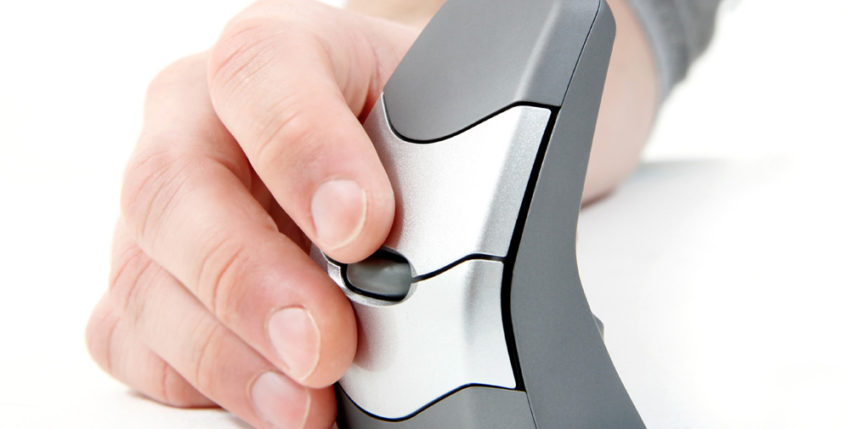
The True Neutral Position of The Hand (In Ergonomics)
Contrary to popular belief the upright position of the hand (or the handshake grip) is not a neutral position that should be adopted by the hand when carrying out activities such as manipulating a computer mouse.
The position that should be adopted is the position of the hand at rest /position of function which is shown in the picture below:

Picture 1 showing the position of the hand at rest/position of function
The position of the hand at rest shown above is a neutral position from a functional point and is referred to by the medical profession as the position of function.
If the hand is injured to such an extent that it has to be placed in a cast in order to fully recover it is placed in the position of function as shown in picture 2 below.

Picture 2 showing hand in cast in the position of function
The reason doctors place the hand is in the position of function is because in this position the least amount of tension is placed on the muscles and tendons of the hand and they are in the best biomechanical position for efficient function when the cast is removed.
The computer mouse can be considered to be a tool that is used to move a cursor about a screen as efficiently as possible. In order achieve optimal efficiency the size and shape of a mouse should be such that the finger joints are near their mid-position so that mouse retention is high and the muscles are only partially stretched.
From pictures 1 and 2 it can be seen that the position of rest or function involves extending the wrist joint between 20 and 30 degrees and flexing the finger joints between 45 and 60 degrees. The thumb is in a position which is known as abduction and in opposition and alignment with the pads of the fingers.
If you now compare pictures 1 and 2 with the Picture below it can be seen how the DXT Ergonomic Mouse enables the users hand to use the position of function which provides optimal biomechanical advantages when moving and positioning the cursor.

Picture 3 showing DXT Ergonomic Mouse being manipulated from the position of function
In the position of function the hand is not upright but in a position of semi pronation which involves being turned downwards away from the vertical position towards the surface of the desk as shown in Picture 3.
The use of the upright position of the hand or handshake grip as promoted and utilised by some types of computer mouse design has probably come about from a misunderstanding by the designers of the neutral position of the wrist from a biomechanical and functional point of view.
The neutral position such designs of mice reference is in fact the basis of a means of measurement that doctors and allied professions use to assess the available motion in a joint shown in picture 4.

Picture 4 showing the reference point for measuring the range of movement in the forearm.
Doctors required a standard means of measuring the amount of movement in a joint so that all doctors could understand the degree of restriction in a given joint when they were assessing a joint condition previously attended to by a another doctor.
Subsequently a standard method of measuring and recording joint motion was first published by the American Academy of Orthopaedic Surgeons in 1965.
In picture 4 which is taken from the publication you can see that the term “Neutral” is used for the starting position to measure the range of movement of the forearm into pronation or supination.
This position of “neutrality” has no bearing on the optimal position for the function of the hand when manipulating such devices as a computer mouse.
The optimal position for manipulating such devices as a computer mouse is demonstrated in Pictures 1,2 & 3 above which is not the handshake grip but the position of function/rest.
When looking for support around ergonomics workstation set-up you should look to seek advice from a qualified ergonomics consultant or chartered physiotherapist .
You can view a video of the DXT Ergonomic Mouse using the position of function DXT Ergonomic Mouse Video
